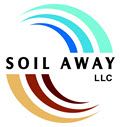
Mold Remediation Specialist
Growing in a home or business, mold is much more than an eyesore or an indication that a good cleaning is needed. While most types of mold are more of a nuisance, this can be an indicator of a water problem. Some molds can even be detrimental to a person’s health, particularly when the spores are airborne and breathed in. Regardless of the type of mold, it is important to fully remove it and cautions must be taken to ensure that the mold spores do not carry through the air to other parts of the property.
Mold Spores are Microscopic and Can Grow Exponentially When Exposed to Moisture
While mold is all around us, and is simply unavoidable both indoors and outdoors, water and high humidity areas can quickly become a breeding ground for the spores. If mold growth has become a problem in your home or office, this is generally also indicative of a moisture problem. Beyond standing water, humidity levels that regularly exceed 45% relative humidity can sometimes create an ideal environment for mold to grow and thrive.
What Happens During Mold Remediation?
Because of its microscopic nature and the fact that spores can carry unseen through the air, mold remediation is best left to disaster restoration professionals like the team at Soil-Away. During the remediation process, the area that is infected will be cordoned off, often using plastic sheeting to do so. HEPA air scrubbers will be installed to control air flow and filter airborne mold spores. Safety is paramount for workers, the restoration technicians will be wearing appropriate PPE (personal protective equipment), to protect their body, face, and lungs. The goal is to prevent cross-contamination, which means stopping mold from being tracked to other unaffected areas.
Once the workspace is properly setup to ensure safety and minimize cross-contamination, the mold remediation specialist will start the next phase of the project. Removing mold spores is key. This may include a variety of activities such as controlled demolition and removal of building materials, HEPA vacuuming, dry-ice blasting or HEPA sanding. After removing most of the visible mold spores, a thorough cleaning is performed of the space to address unseen spores on surfaces. Typically, a wet washing with an anti-microbial agent is appropriate. HEPA air scrubbers are left in the space for anywhere from 24-72 hours after the service to continue capturing any airborne spores.
The team at Soil-Away has extensive experience doing and has teams available 24/7 to respond. In addition, the Soil-Away professionals can help to identify the reason for the high humidity levels that led to the mold growth.
Contact Soil-Away at 603-641-6555.

